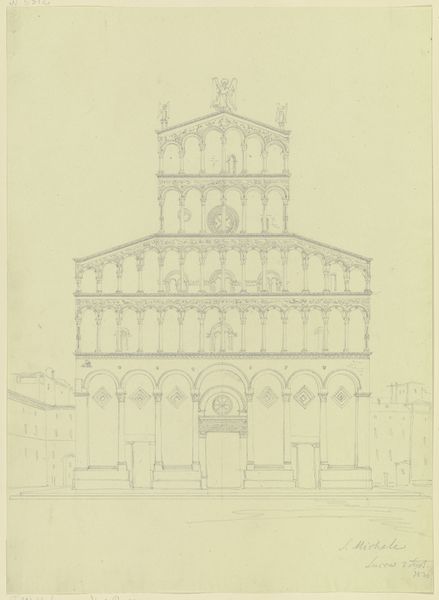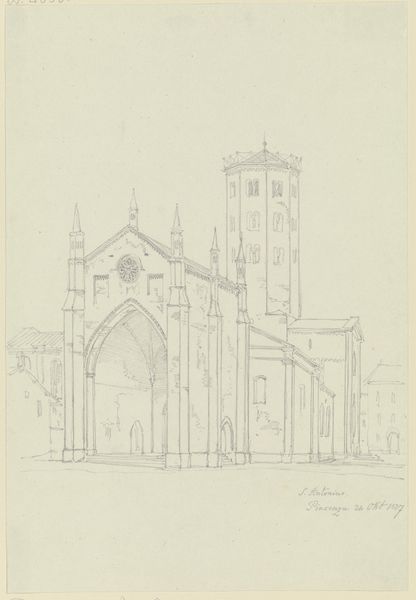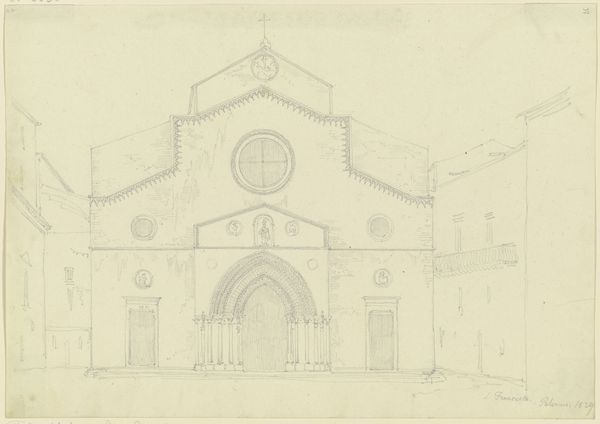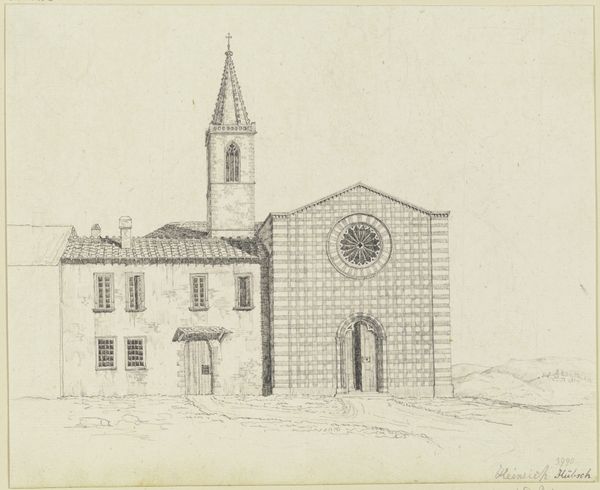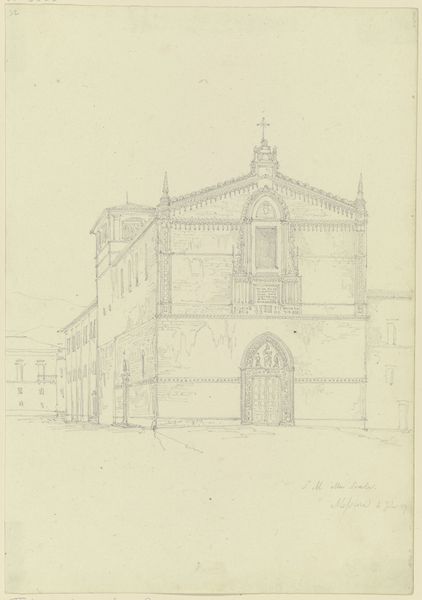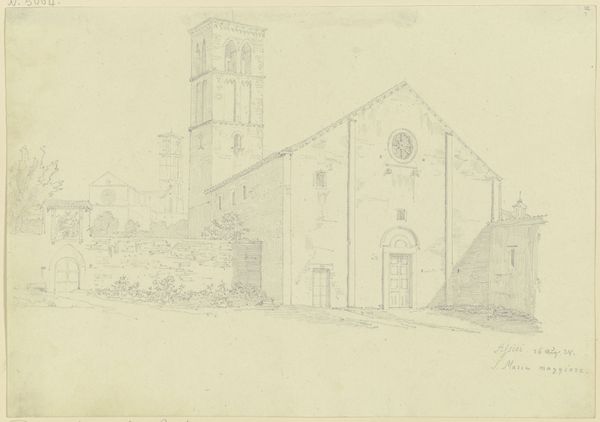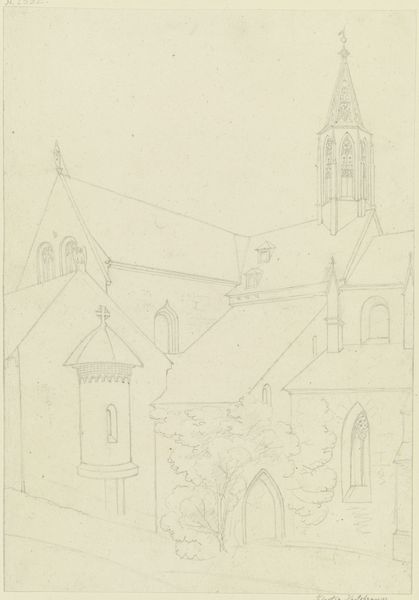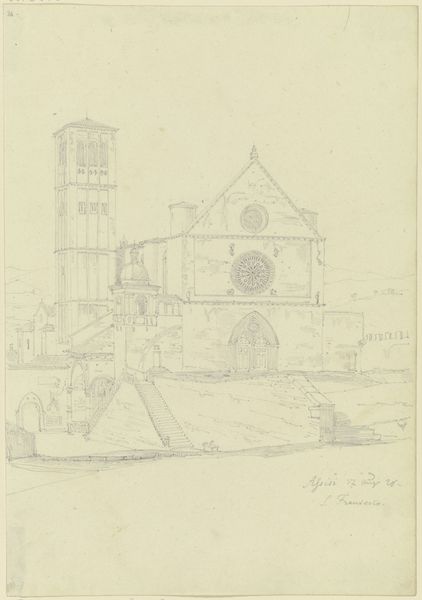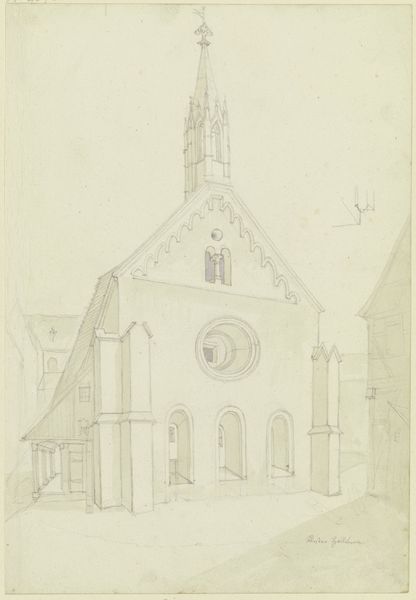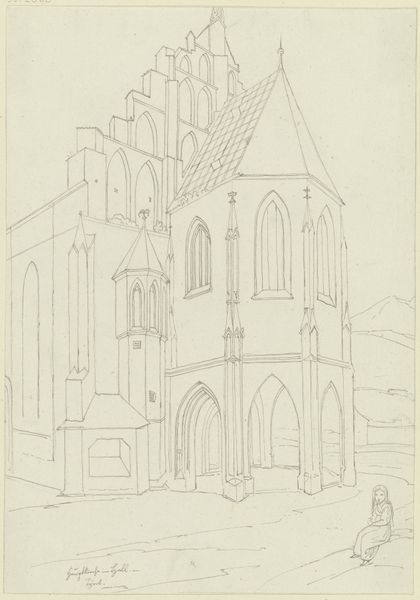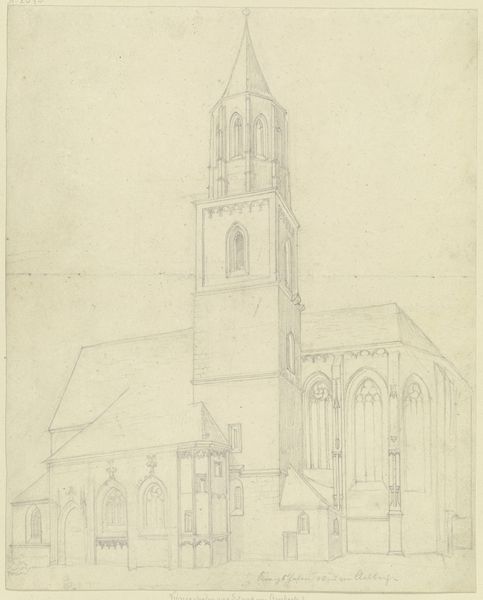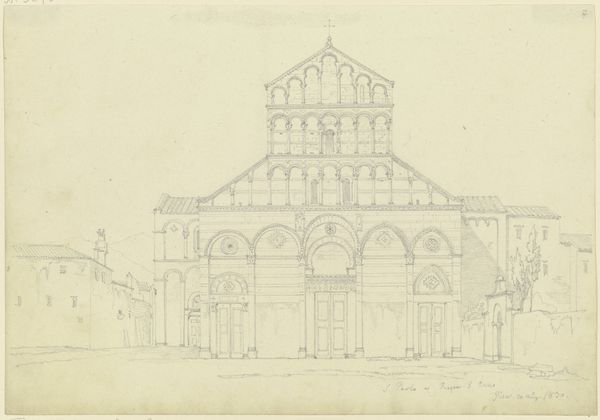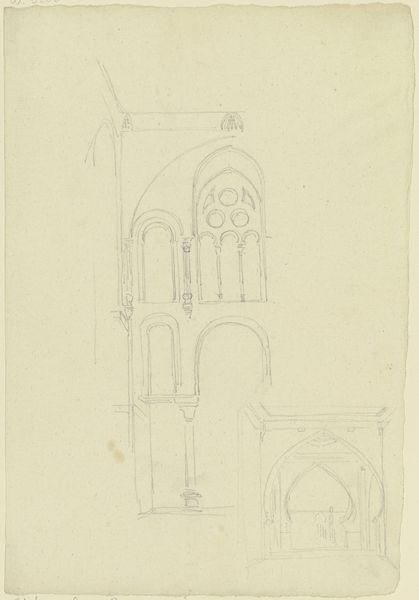
drawing, pencil, architecture
#
drawing
#
neoclassicism
#
pencil
#
architecture
Copyright: Public Domain
Editor: This drawing, "S. Maria del Carmine in Pavia," was created with pencil sometime between 1815 and 1827 by Friedrich Maximilian Hessemer. It’s very architectural. I am really struck by the sort of austerity in this representation. What can you tell me about it? Curator: Hessemer gives us a precise rendering of this church, likely part of a larger study of architectural styles. It reminds us that Neoclassicism wasn't just about grand temples; it also influenced how existing structures, like this medieval church, were perceived and documented. What do you notice about the point of view? Editor: It’s from a ground-level perspective. It makes it seem monumental, even though the lightness of the pencil gives it a delicate feeling. Curator: Precisely! And that is how Neoclassicism works; it’s an intellectual and political project. Think about the rediscovery of Pompeii during this era, the encyclopedic impulse to document and categorize the world… how might documenting architecture in this way reflect larger power structures of the time? Who was it intended to serve? Editor: Well, perhaps it’s aimed at educating architects or patrons, standardizing building styles, reflecting a kind of control over knowledge and taste. Curator: Exactly. This seemingly objective drawing isn't neutral at all. It subtly reinforces a specific viewpoint, one tied to the values and ambitions of a particular social class during a period of great change. Editor: That’s fascinating. I’d only considered it in terms of aesthetics, but I see the social dimension now. Curator: It's a reminder that art, even in its seemingly purest form, participates in and reflects the politics of its time. Editor: I will definitely look at architectural drawings differently now!
Comments
No comments
Be the first to comment and join the conversation on the ultimate creative platform.
